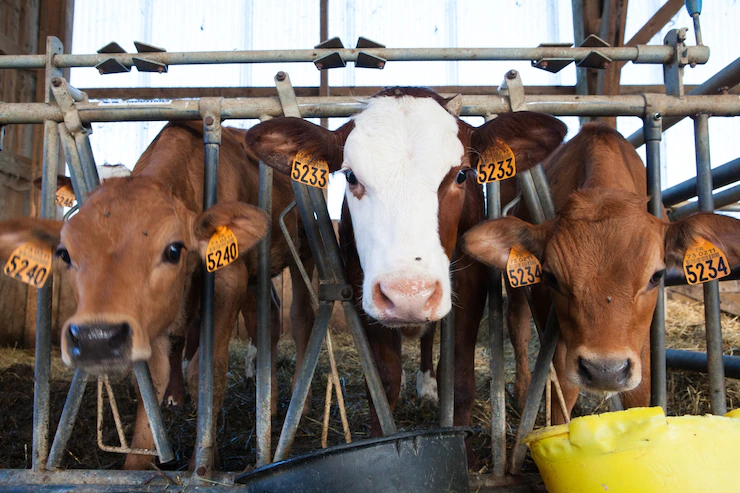Anthrax is a bacterial infection caused by the bacterium Bacillus anthracis. It primarily affects herbivorous animals, including cattle. Early detection and treatment are crucial to prevent the spread of the disease. Here are some symptoms of anthrax you should look out for in cattle:
- Sudden death: Anthrax can cause sudden death in otherwise healthy animals without any prior signs of illness. This is one of the hallmark symptoms of the disease.
- Fever: Infected cattle may develop a high fever, with body temperatures rising above normal levels.
- Respiratory distress: Cattle with anthrax may exhibit signs of respiratory distress, including rapid or labored breathing.
- Loss of appetite: Infected animals may lose their appetite and show a decreased interest in food and water.
- Weakness and depression: Anthrax can cause general weakness and depression in affected cattle. They may appear lethargic and show a lack of energy.
- Blood in bodily fluids: Anthrax bacteria can cause bleeding disorders, leading to the presence of blood in nasal discharge, saliva, urine, and feces of infected animals.
- Swelling and edema: Some cases of anthrax in cattle can result in swelling and edema, particularly in the neck, brisket, and other dependent parts of the body.
- Darkened or congested mucous membranes: The mucous membranes of the mouth, nose, and eyes may appear dark red or congested due to poor oxygenation caused by the disease.
- Rapid decomposition: Anthrax-infected carcasses may decompose rapidly, often with blood oozing from natural openings.
It’s important to note that these symptoms can vary in severity and not all infected cattle may exhibit all of them. If you suspect anthrax in your cattle or observe any unusual symptoms, it is crucial to contact a veterinarian immediately. Anthrax is a zoonotic disease, meaning it can be transmitted to humans, so it’s important to take precautions and follow proper handling and disposal procedures when dealing with potentially infected animals.









